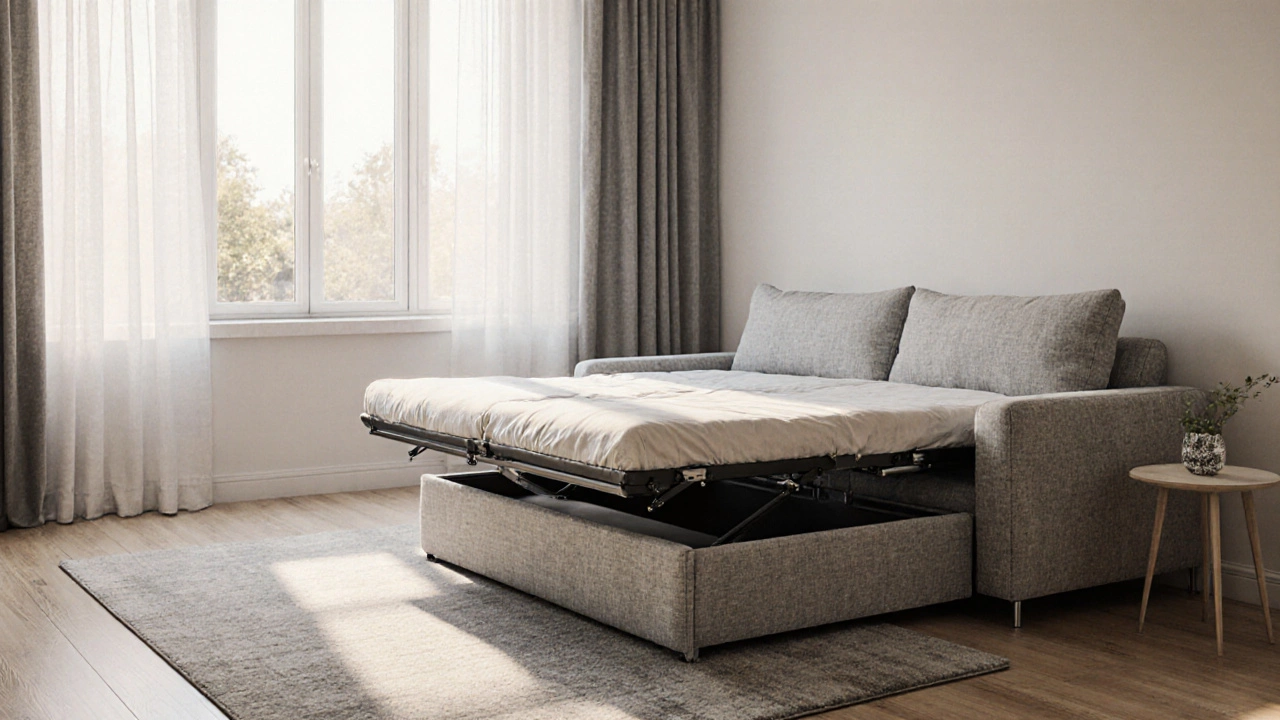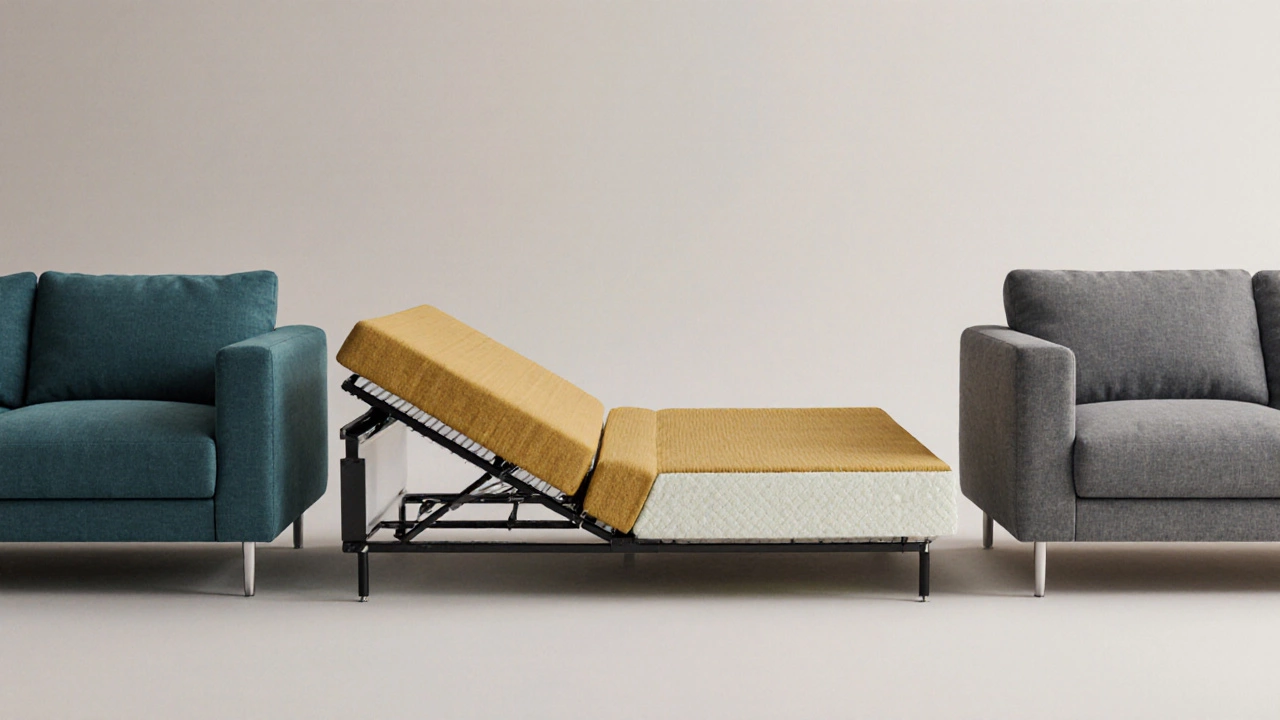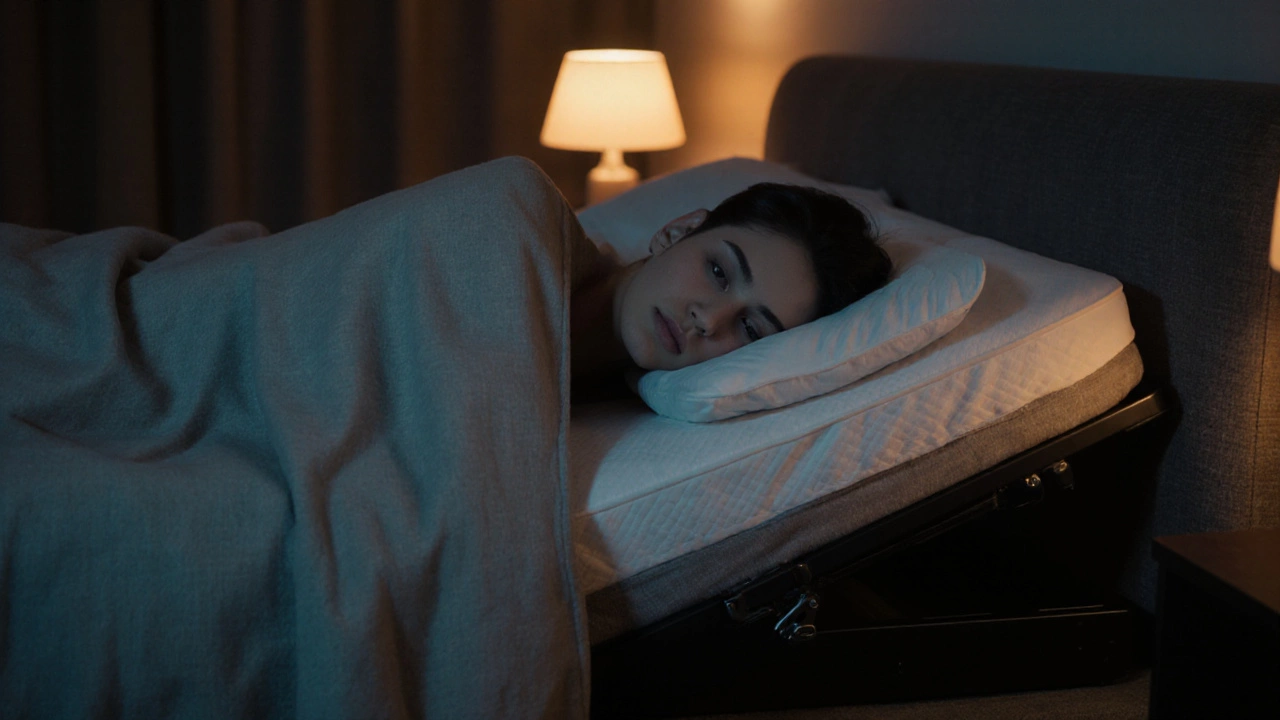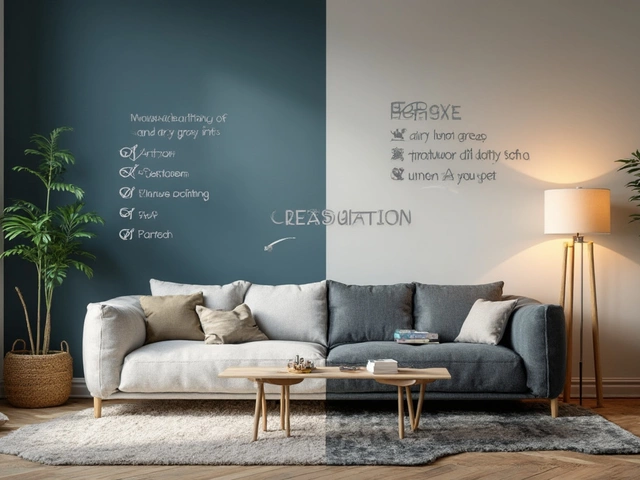
Sofa Bed Comfort Checker
Answer these questions to determine if a sofa bed is right for daily use:
Comfort Recommendation
When it comes to space‑saving furniture, sofa bed is a popular choice for many households. A sofa that folds out into a sleeping surface, allowing a living room to double as a bedroom. The big question is whether a sofa bed can deliver the same sofa bed comfort you’d expect from a dedicated bed when you use it every night. Below we break down the factors that dictate comfort, compare the most common mechanisms, and give you a practical checklist so you can decide if a sofa bed fits your daily routine.
What Makes a Sleeper Comfortable?
Comfort isn’t just about a soft cushion; it’s a blend of mattress support, sleep posture, upholstery feel, and how the frame handles repeated folding. Research from the Sleep Foundation shows that a mattress that offers a balanced firmness (around 6‑7 on a 10‑point scale) reduces pressure points for most sleepers. When a sofa bed’s mattress is too thin or overly soft, the body sinks, leading to misalignment and restless nights.
Another key piece is sleep posture the way a person’s spine aligns while lying down, influenced by mattress firmness and support zones.. A good sleeper should keep the spine neutral, shoulders and hips supported, and avoid excessive rolling. Finally, the type of upholstery-leather, linen, microfiber-affects how the sofa feels when you sit and how it breathes when you lie down.
Common Sofa Bed Mechanisms and Their Comfort Profiles
Not all sofa beds are built the same. The three most widely available mechanisms each have distinct comfort trade‑offs.
| Mechanism | Opening Style | Typical Mattress Type | Comfort Rating* (1‑10) | Best For | Price Range (USD) |
|---|---|---|---|---|---|
| Pull‑out sofa bed | Drawer‑like frame that slides out | Innerspring mattress | 7‑8 | Guests who need a full night’s sleep | $800‑$2,200 |
| Futon style sofa bed | Backrest folds flat | Memory foam mattress | 5‑7 | Short naps or occasional guests | $400‑$1,200 |
| Click‑clack sofa bed | Backrest clicks into a horizontal position, then folds out | Thin layered foam or hybrid | 6‑7 | Modern apartments with sleek aesthetics | $600‑$1,800 |
*Ratings are based on a blend of consumer reviews, mattress support data, and ease of conversion.

How Mattress Quality Affects Daily Use
Memory foam mattress A viscoelastic foam that conforms to body shape, easing pressure points. provides excellent contouring but can feel too soft if the foam density is low (<4 lbs/ft³). High‑density foam (5‑5.5 lbs/ft³) adds support, making it more suitable for everyday sleeping. However, foam tends to retain heat, so if you live in a warm climate, look for gel‑infused or open‑cell designs.
Innerspring mattress A traditional coil system that offers bounce and robust edge support. usually feels firmer and promotes airflow, keeping the surface cooler. For sofa beds, manufacturers often use a thinner coil core (6‑8 inches) topped with a foam layer. The downside is that the coil system can become noisy after years of folding.
Hybrid options combine a slim coil core with a thin memory foam top layer, trying to capture the best of both worlds. When you plan to sleep on a sofa bed nightly, aim for a mattress thickness of at least 6 inches; anything thinner will likely sag and reduce comfort over time.
Real‑World Experiences: What Users Say About Everyday Sofa Bed Use
We scoured forums, product reviews, and a 2024 sleep‑study survey that asked 1,200 owners how they felt after a month of nightly sofa‑bed use. Here are the top takeaways:
- Pull‑out models with innerspring cores received the highest satisfaction (78% would recommend).
- Futon‑style units were praised for their low price but often complained about back stiffness after a week of daily use.
- Click‑clack sofas earned points for style but had mixed comfort scores; users who added a separate mattress topper reported a big comfort boost.
- Durability emerged as a decisive factor: frames with reinforced steel hinges lasted 4‑5 years on average, while cheaper wood hinges gave out after 2 years of heavy use.
One reviewer from Seattle shared: “I bought a pull‑out sofa bed for my studio apartment. After six months of sleeping there every night, the mattress still feels like a hotel bed-no sagging, no aches. The only downside? The pull‑out mechanism gets a bit stuck if I rush it.”
Another user who opted for a futon said: “It’s perfect for weekend guests, but after three nights of daily sleep my lower back started hurting. Adding a 2‑inch latex topper fixed it, but that’s an extra cost.”

Tips to Maximize Comfort on a Daily Basis
- Choose the right mattress thickness. Aim for 6‑8 inches; thinner models compromise support.
- Invest in a quality mattress topper. A 2‑inch latex or high‑density memory foam layer can raise a click‑clack or futon to hotel‑bed levels.
- Rotate the mattress regularly. Switch head‑to‑foot every two weeks to prevent uneven wear.
- Check the frame’s hinges. Look for steel or reinforced metal hardware; lubricate the joints annually with a silicone spray.
- Mind the upholstery. Breathable fabrics like linen or cotton blends keep the sleeping surface cooler, while leather can feel sticky in summer.
- Use a proper pillow. Since sofa beds are often narrower than standard beds, select a pillow that supports neck alignment without overwhelming the limited width.
Buying Checklist for Everyday Sofa Bed Use
- Identify the primary mechanism that matches your space and style (pull‑out, futon, click‑clack).
- Confirm mattress type and thickness; prioritize innerspring or high‑density memory foam for nightly sleep.
- Assess frame material and hinge durability; steel > reinforced wood.
- Consider upholstery fabric for breathability and durability.
- Measure your room: ensure the sofa opens fully without hitting walls or furniture.
- Set a budget, keeping in mind that a good mattress may add $200‑$400 to the base price.
- Read warranty details-look for at least 5 years on the frame and 2 years on the mattress.
Following this checklist helps you avoid the “nice‑to‑have but not‑daily‑use” trap that many first‑time buyers fall into.
Frequently Asked Questions
Can a sofa bed replace a regular bed for a full‑time sleeper?
Yes, but only if you choose a pull‑out model with a thick innerspring or high‑density memory foam mattress, and you add a supportive topper if needed. The key is adequate thickness (6‑8 inches) and a sturdy frame that won’t creak nightly.
How often should I replace the mattress in a sofa bed?
Most manufacturers recommend replacement every 5‑7 years for daily use, similar to a regular mattress. Signs of sagging, loss of support, or increased back pain indicate it’s time for a new one.
Is a futon ever comfortable enough for nightly sleep?
A futon can work for occasional guests, but for nightly sleep you’ll likely need a high‑density memory foam layer and a breathable topper. Even then, many sleepers report a firmer feel that isn’t ideal for side‑sleepers.
What upholstery fabric helps keep the sleeping surface cool?
Natural fibers like linen, cotton, or a cotton‑linen blend allow air to circulate. Some modern microfiber blends are engineered with moisture‑wicking properties that also help regulate temperature.
Do click‑clack sofa beds need extra support when used daily?
Because many click‑clack units use thinner foam layers, adding a 2‑inch latex or high‑density memory foam topper greatly improves support and longevity. Without a topper, the foam can compress quickly, lowering comfort.



